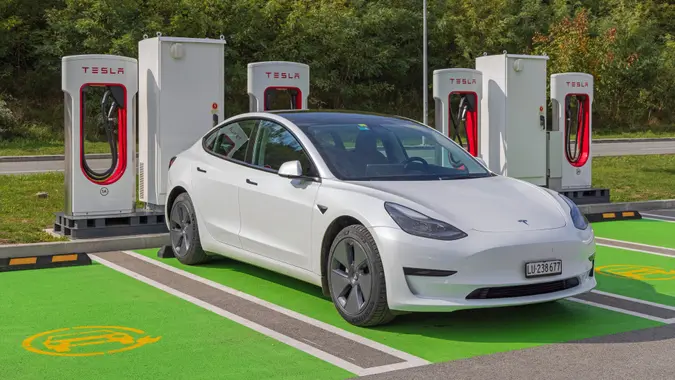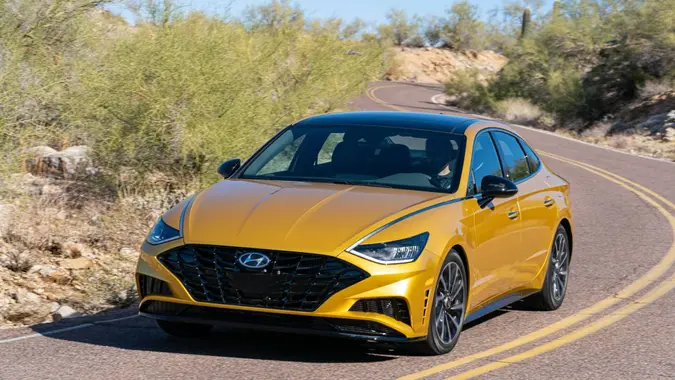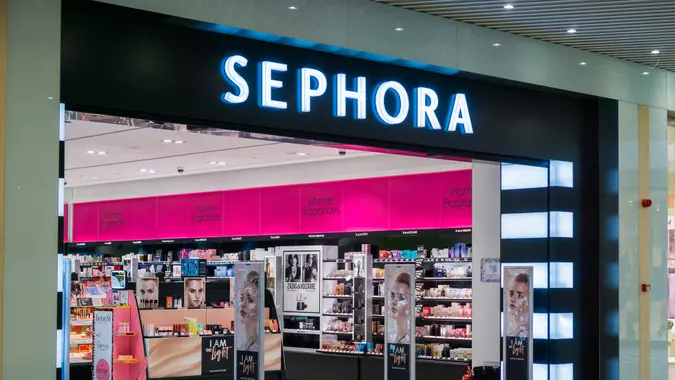2 Car Colors Hurt Resale Value — Steer Clear of These Shades
Commitment to Our Readers
GOBankingRates' editorial team is committed to bringing you unbiased reviews and information. We use data-driven methodologies to evaluate financial products and services - our reviews and ratings are not influenced by advertisers. You can read more about our editorial guidelines and our products and services review methodology.

20 Years
Helping You Live Richer

Reviewed
by Experts

Trusted by
Millions of Readers
It’s common knowledge that mileage and condition can cause a car’s value to drop over time, but not everyone realizes its color can do the same.
A study by NexusMedia, using insights from EasySearch, compared depreciation across ten best-selling models, from sedans to SUVs to EVs. Average five-year depreciation has surged to 45.6% in 2025, up from 38.8% in 2023, with electric vehicles losing nearly 60% of their value. Within that, color stands out as a key factor. Read on to find out which shades to steer clear of.
Blue Cars
- Average depreciation: 27.11%
- Average value lost: $12,449
Blue cars rank as the worst performers for resale, coming with the steepest average drop among popular colors. According to Kelley Blue Book, blue vehicles are also harder to keep clean since water spots, scratches and swirl marks show quickly. That extra upkeep doesn’t help their resale prospects. Despite these drawbacks, blue still lands in the top five most popular car colors, with a 9% market share last year, according to Edmunds.
Black Cars
- Average depreciation: 23.30%
- Average value lost: $10,804
Despite being one of the most common shades on the road — coming second on Edmunds’ list with 22% of market share — the study found black vehicles depreciate more than most other colors. Shoppers may be drawn to the sleek look, but used buyers show less enthusiasm, dragging down trade-in and resale prices. Kelley Blue Book noted that black cars look best right out of the wash, but dirt, pollen and dust settle almost immediately.
Other Popular Colors
The study also tracked depreciation on red, silver and white vehicles. Unlike black and blue, these shades are easier to care for in terms of maintaining their look. Red cars fall 21.6% on average, costing $8,700. Silver drops 21.3%, losing $8,200. White proves the most stable on the list, dropping 18% or about $7,000, and it tops the list of most popular colors at 25% of market share. The gap between white and blue is more than $5,000 — a reminder that, surprisingly, paint choice can carry real financial consequences.
What This Means for Car Buyers
While drivers might choose their car color based on aesthetics, it could have a big impact on how much money comes back when it’s time to sell. With overall depreciation rising and EVs in particular losing value fast, blue and black are the toughest shades to recover money on. Neutral tones like white or silver may not turn as many heads, but they’re far safer financially when it comes time to move on to the next vehicle.
 Written by
Written by  Edited by
Edited by 


























